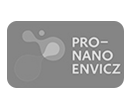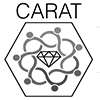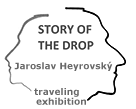Size - and Composition - Selected Sub-Nano Cluster Catalysts and Electrocatalysts
Institutional Seminar
Thursday, June 16, 2022, 3:00 p.m.
J. Heyrovský Institute, Brdička Hall
Scott L. Anderson
Chemistry Department, University of Utah
Salt Lake City, UT 84112, USA
Supported sub-nanometer clusters are interesting as metals-efficient catalysts that can be tuned by varying cluster size and composition. Small clusters are also typically present in “single atom” catalysts, and in some cases, they can be responsible for much of the catalytic activity. We use mass-selected deposition in UHV to prepare cluster catalysts with independent control over the cluster size and coverage. To produce size- and composition-selected clusters, we use the deposited clusters to seed self-limiting chemistry that adds atoms of a second element. The cluster catalysts are studied both by in situ surface science methods, and by aqueous electrochemistry. Mechanisms are informed by DFT calculations from our collaborators in the Alexandrova and Sautet groups at UCLA. Examples presented will include use of PtnGex/alumina catalysts for selective alkane-to-alkene dehydrogenation at high temperatures, and the effects of cluster size on activity and stability for the electrocatalytic hydrogen evolution reaction.
Scott Anderson got his Ph.D. at UC Berkeley and was a postdoctoral fellow at Stanford before joining the faculty at State University of New York at Stony Brook in 1983. His group moved to the University of Utah in 1995, where he currently holds the Henry Eyring Endowed Chair. His current research interests include use of size-selected cluster catalysts to probe mechanisms for heterogeneous catalysis and electrocatalysis, pyrolysis and catalytic decomposition chemistry for hydrocarbon fuels, single particle mass spectrometry to study surface chemistry on individual nanoparticles, and high/ultrahigh temperature surface chemistry of refractory nanomaterials, including allotropes of carbon, silicon, silicon carbide, and ultrahigh temperature ceramics like HfC and ZrB2.

















